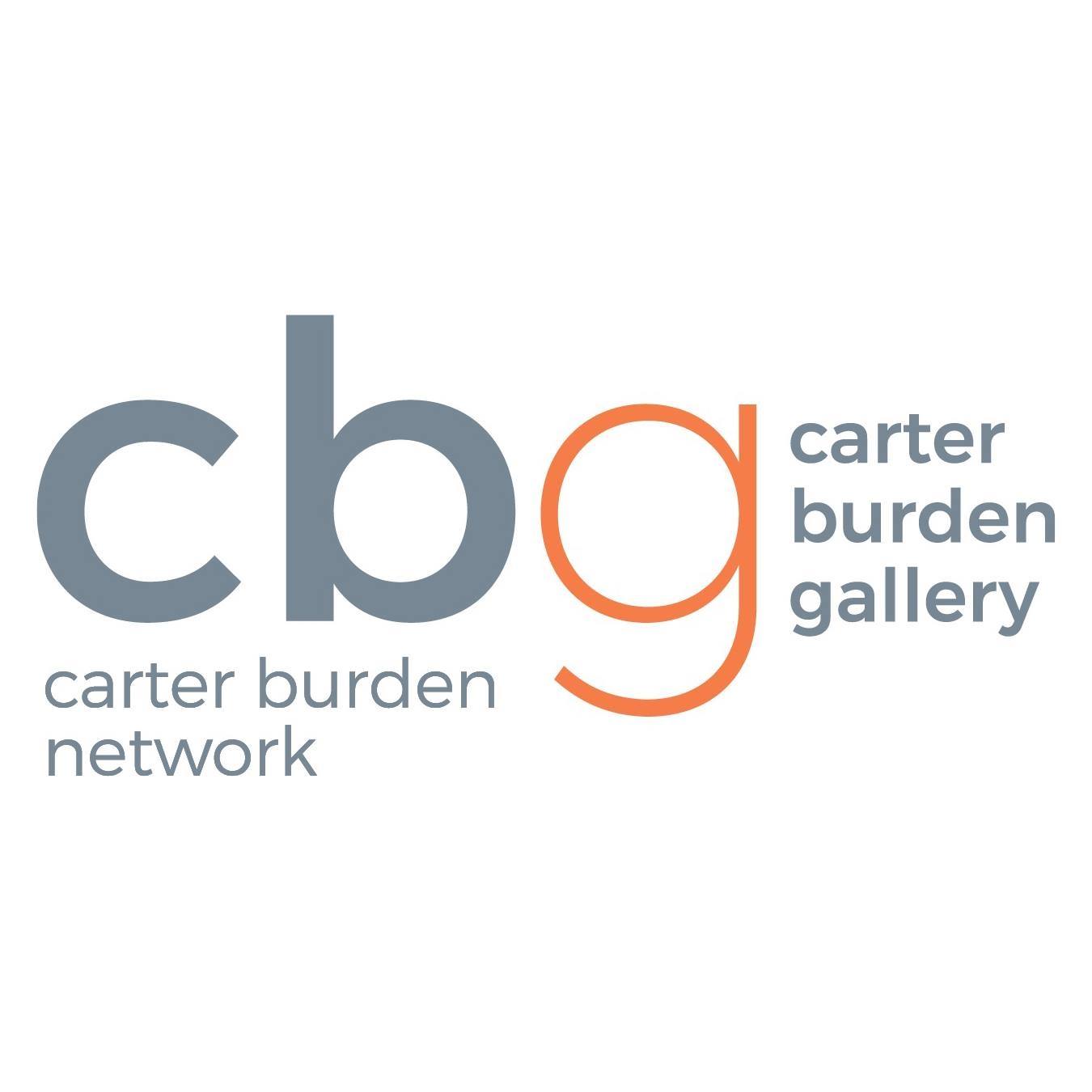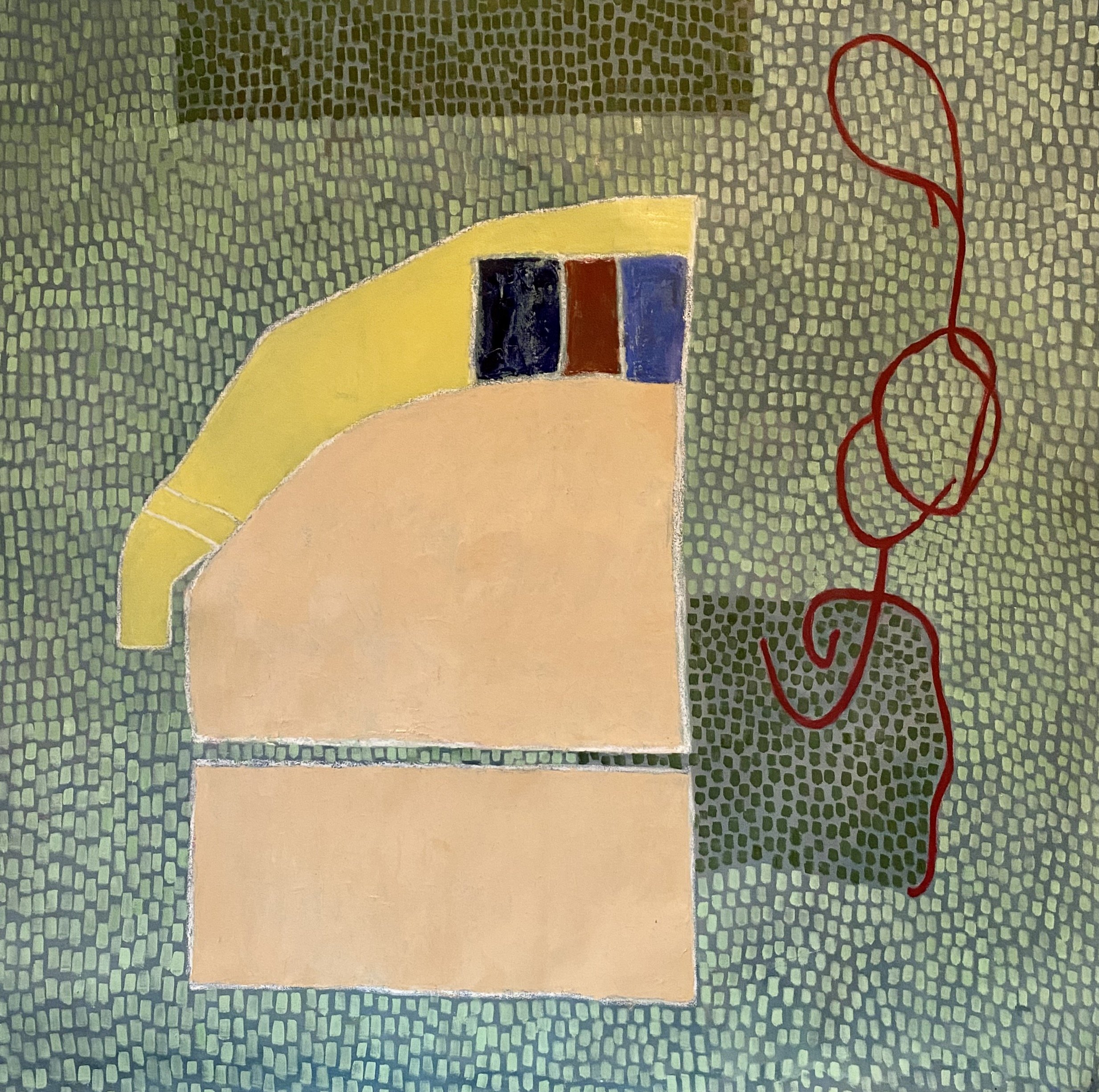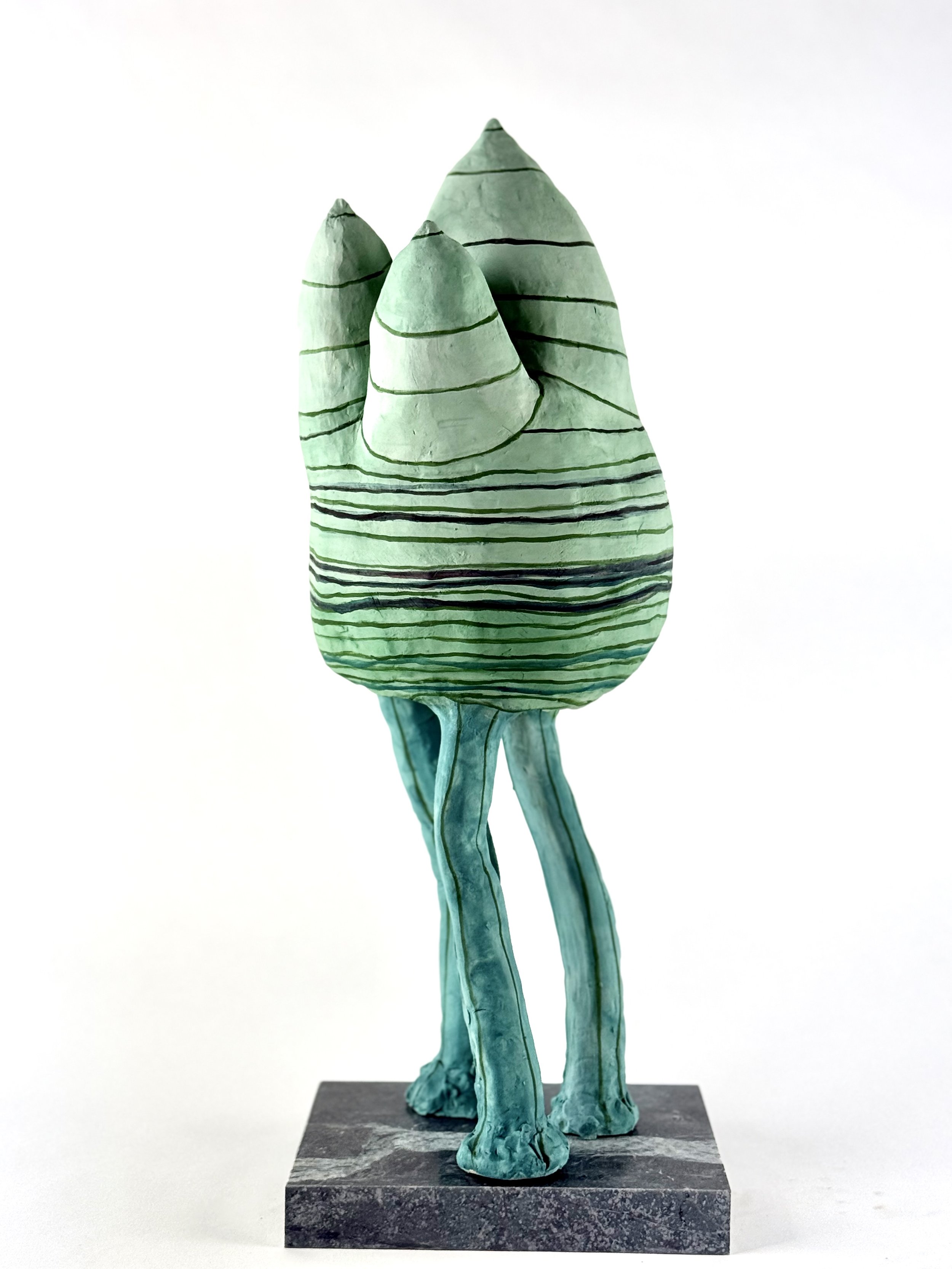April 24 – May 20, 2025
Reinventing Rules: Susan Lisbin, Joan Mellon, and Gail Winbury
10 @ 70: Stewart Siskind
On The Wall: Kame San no Shukufuku, Blessing of the Turtle: Sue Koch
Opening Reception: Thursday, April 24, 6 - 8pm
Carter Burden Gallery presents three exhibitions: Reinventing Rules featuring the abstract paintings and sculptures of Susan Lisbin, Joan Mellon, and Gail Winbury in the East Gallery; 10 @ 70 featuring the collages of Stewart Siskind; and On the Wall featuring the textile installation Kame San no Shukufuku, Blessing of the Turtle exploring an unseen, underwater world by Sue Koch. The reception will be on Thursday, April 24 from 6pm to 8pm. The exhibitions run from April 24 – May 20, 2025, at 548 West 28th Street in New York City. The gallery hours are Tuesday - Friday, 11 a.m. - 5 p.m., Saturday 11 a.m. - 6 p.m.
Download Exhibition List
Sue Koch
In her installation for On the Wall, artist Sue Koch reflects on life beneath the surface in the work Kame San no Shukufuku, Blessing of the Turtle that spans over twelve feet. In this expansive mixed media piece, which incorporates acrylic, jute, mono print, and mock silkscreen on linen, Koch depicts the sea with cephalopods, coral, jellyfish, sea anemone, urchin, and turtles through her own lexicon of abstraction. Her work is influenced by Japanese Rinpa painting particularly, Shibata Zeshin’s Autumn Grasses in Moonlight. “The Rinpa aesthetic embraces bold, exaggerated, or purely graphic renderings of natural motifs... Underlying Rinpa design sensibilities is a tendency toward simplification and abbreviation, often achieved through a process of formal exaggeration.” (John Carpenter, Designing Nature, The Rinpa Aesthetic in Japanese Art, The Metropolitan Museum of Art, 2012.) Koch began working on Kame San no Shukufuku, Blessing of the Turtle in 2019 and resumed working on the piece in 2024, stating, “I didn’t feel it was finished, and perhaps, it’s still in progress, but here is where I am now.”
Artist and graphic designer, Sue Koch was raised in Connecticut where her father was a topographer, which greatly inspired her career. Koch spent over twenty-five years as the Graphic Design Manager at The Metropolitan Museum of Art (MET). She studied Fine Art at Skidmore College, and earned an M.A. from Columbia University, Teachers College. Her thesis, Design and Play, a Series of Projects provided the impetus for current work. Since leaving the MET in 2014, Koch has been practicing as an independent design consultant providing creative direction, strategy, graphic design, and project management, as well as being a dedicated visual artist.
Kame San no Shukufuku, Blessing of the Turtle is on view until July 30, 2025.
Susan Lisbin
In Reinventing Rules, Susan Lisbin presents recent paintings using oil and cold wax on canvas, as well as biomorphic ceramic sculptures. Profoundly hard of hearing since age two, Lisbin spent a lot of time silently observing others. That experience informed the organic forms in her work and symbolize people in space, investigating how personal space is about connecting and relating to each other. Lisbin states, “The relationships that fill us with infinite joy, that make us feel whole or make us feel incomplete - are all part of life. Each piece is a unique platform from which juxtapositions and identities can be discovered.” By building diverse forms with clay or paint and exploring our eccentric uniqueness, Lisbin offers the viewer an opportunity to see themselves in relation to others.
Susan Lisbin is a Hudson, New York based painter and sculptor. She studied at the School of Fine and Applied Arts at Boston University from 1968 to 1971 and received her BA in painting from Ramapo College in New Jersey in 1975. Lisbin earned a master’s degree in painting from Montclair State University in 1980. She has exhibited her work extensively in the New York metropolitan area in solo and group shows; highlights include her solo exhibitions at the Ben Shahn Center for Visual Arts at William Patterson University and the M13 Project Room at Howard Scott Gallery. In 2005, Lisbin was awarded a residency fellowship at the Vermont Studio Center; and in 2017 she was awarded a residency at Horned Dorset Art Colony. She has received press from The Connecticut Examiner, WGXC Tom Roe morning show, and the Montclair Times. Her work is in many private collections in the New York metropolitan area.
Joan Mellon
Joan Mellon presents small sculptural wall works in the exhibition Reinventing Rules. The physical act of making and the exploration of material are central to Mellon’s work. Her work can be recognized by its focus on the use of strong color, simple composition, and the use of various materials—some purchased, and others found. Her interest in how choice and chance are at the core of the creative process is always at play. Mellon explains the origins and process of the work, “A couple of years ago an artist I know saw a group of the small 3-dimensional wood pieces I created from wood gleaned from the scrap bins of my neighborhood lumber yard. Commenting on these enthusiastically my friend said: ‘These pieces, individually and, as a whole, are remarkable in both their complexity and spareness.’ In response I said, ‘The complexity arose from whatever sparked the piece in the first place and the spareness seemed to insist.’ Explaining further, I said, ‘Simplicity is something I get to, not something I begin with.’”
Joan Mellon, b. 1944 in Brooklyn, NY, has a BFA from School of Visual Arts and a MA in Liberal Studies from SUNY Empire State College where she has been an adjunct mentor. Mellon has also been an artist-in-residence in hospital and cancer centers in NYC and taught artists with special needs. Her paintings and works on paper are represented in private and public collections including Franklin Furnace Archives at the Museum of Modern Art, Johnson & Johnson, New York Public Library Print Collection and School of Visual Arts. Exhibition highlights include one person shows in NYC and group exhibitions in the US and abroad.
Gail Winbury
Gail Winbury’s abstract oil paintings delve into the emotional, physical, and psychological states that shape human experience in Reinventing Rules. Drawing from her background as a psychologist, Winbury gives form to feelings that often elude language, creating works that embody the deep, preverbal roots of the self. Her paintings navigate themes such as gender, mortality, childhood memory, and, most recently, the evolving relationship between age and creativity. Balancing a love of oil paint’s materiality with contemporary and psychological concerns, her work visualizes what is felt but not easily said.
Painter, Gail Winbury, born in Chicago, Illinois, earned a Doctorate of Psychology degree from Massachusetts School of Professional Psychology and is currently a Master of Fine Arts degree candidate at the Massachusetts College of Arts and Design. She has also studied extensively at Castle Hill Center for Arts with Joan Snyder, School of Visual Arts, and with her mentor, artist Dorothy Yung. Over the past decade Winbury has participated in numerous solo and two-person shows, as well as group exhibitions, most recently Silence Breaking in 2024 with Karl and Helen Burger Gallery at Kean University and The Girl Who Drew Memories at the Elizabeth de C Wilson Museum in 2022-23, as well as exhibitions at The Frechard Gallery in Pittsburgh, Pa; The Jersey City Museum at St. Peters University; The Drawing Rooms and Village West Gallery in Jersey City, NJ; St. Elizabeth University in Morristown, NJ; William James College in Boston Massachusetts; The Henrich Heine Haus in Germany; and Art Collection Schlichtner in Vienna, Austria, among many others. Winbury has curated exhibitions, has been a recipient of several fellowships and participated in notable art residencies in the US and abroad. Winbury’s work is in private collections in the United States, Germany, London, UK, Milan, Italy and is in the public collections of the Canary Wharf Group, London, UK, The Colopolouzos Museum in Athens, Greece, and the Atlantic Health Commission in New Jersey.
Stewart Siskind
In his first solo exhibition with Carter Burden Gallery Stewart Siskind presents a decade of collage work in 10 @ 70, reflecting the evolution of where his practice began to present day as he approaches the significant milestone of his 70th year. Siskind has been intrigued by printed matter after a career as an art director and graphic designer in New York City. That love of the medium has inspired him to breathe new life and meaning into often discarded material. Siskind has always viewed the world in graphic composition, framing what he sees, and creating "composition out of chaos.” The collages combine fragments of images that interact to tell a story. Often the narrative is simply about how shape, color, texture, and pattern are juxtaposed. In the last five years Siskind began to incorporate his own photography as a key element to his practice. Drawn to weathered billboards and advertisements, finding beauty in the imperfect and a fascination with texture and worn surfaces, he began creating digital collage. These prints are rich in tone, with complex arrangements producing depth and movement.
Stewart Siskind earned a BFA in Graphic Design from the School of Visual Arts in Manhattan and did postgraduate study at New York University and Parsons School of Design. His work has received numerous awards for art direction and design and has been published in professional journals. Two posters he designed are in the permanent collection of The Cooper Hewitt, Smithsonian Design Museum. Siskind’s collage and photography has been shown in several New York galleries. He is currently a member of the Prince Street Gallery where he is also Co-Director. A native of Brooklyn, Stewart Siskind currently lives and works in Manhattan.












































































